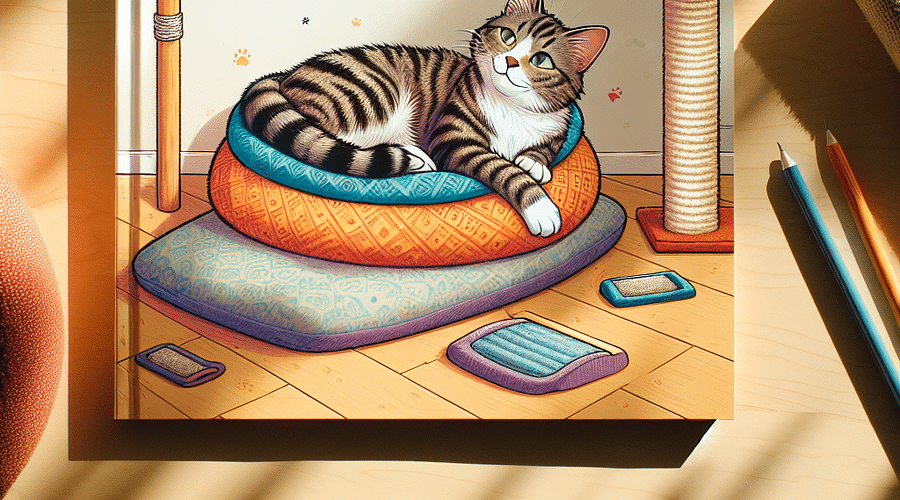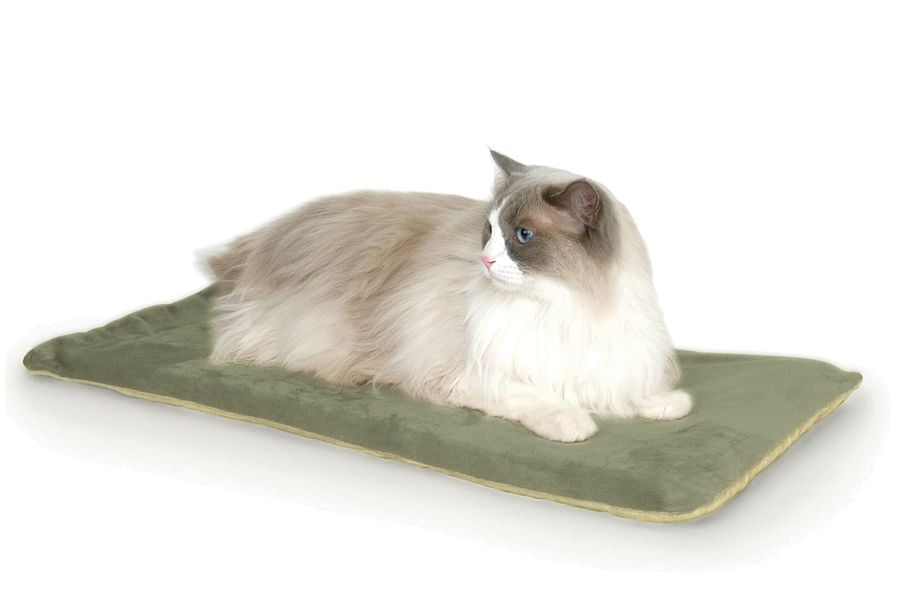The Art of Cat Napping: Providing the Ideal Sleep Environment for Your Feline

Cats are renowned for their ability to sleep anywhere and at any time. Yet, as cat owners, we must understand that the quality of their sleep is just as important as the quantity. Providing your feline with an ideal sleep environment is not just about a soft cushion or a quiet corner; it's about creating a sanctuary that caters to their instinctual and physical needs, ensuring they get the restorative rest they require.
Sleep is not merely a time for your cat to rest, but it's also crucial for their health and well-being. Cats can spend up to 16 hours a day sleeping, and this time allows their bodies to repair tissues and strengthen their immune system. A lack of quality sleep can lead to stress, obesity, or other health issues. Understanding the importance of sleep in your cat's life is the first step towards providing them with an appropriate environment.
The bed you choose for your cat should be more than just an afterthought. It should provide comfort, warmth, and security. Cats prefer bedding that allows them to curl up and feel protected. Beds with raised edges or even enclosed cat caves can be particularly appealing to them. Remember that location is key—a bed placed in a drafty hallway may go unused, whereas one in a sunny spot might become your cat's favorite place.










Additionally, consider the texture and material of the bedding. Some cats have preferences when it comes to the softness or type of fabric. Observe if your cat tends to nap on certain types of surfaces around your home—this could guide you in selecting the perfect bed.
A serene environment contributes significantly to good quality sleep. Cats are sensitive creatures; loud noises or sudden disturbances can easily disrupt their slumber. To create a calm atmosphere, consider where in your home your cat seems most relaxed. Is it under a piece of furniture, on top of a wardrobe, or perhaps by a window? Positioning their bed in these areas can make all the difference.
Noise levels are not the only factor; lighting plays an important role too. Cats do not require complete darkness to sleep—after all, they are crepuscular beings—but dimming the lights can signal bedtime and help them wind down from their daytime activities.
Every cat has unique preferences influenced by age, health status, and personality. For instance, older cats might need orthopedic beds to ease joint pain while kittens may prefer snuggly plush beds that mimic being huddled with littermates.
If you have multiple cats, you'll need to ensure there are enough beds—and ideally some extras—so everyone has options without competition which could lead to stress or aggression. Moreover, some cats may have specific medical conditions that necessitate special sleeping arrangements which should be discussed with your veterinarian.
Incorporating these considerations into your approach will go a long way toward providing an ideal sleep environment for your feline friend. Stay tuned as we delve deeper into advanced strategies such as scent enrichment and temperature control in part two of this article.
While providing the perfect sleep environment is crucial, establishing a serene atmosphere is equally important. Cats are sensitive to stress and disturbances, which can significantly affect their sleep quality. To create a calm atmosphere, consider playing soft music or using a white noise machine to drown out disruptive sounds. Additionally, incorporating pheromone diffusers can help soothe your cat's nerves, especially in multi-pet households or during stressful situations like moving to a new home.
Remember that your own behavior also impacts your cat's stress levels. Maintain a peaceful demeanor around nap times and avoid sudden movements or loud noises that could startle your cat out of slumber. Consistent routines are key; try to feed, play, and let your cat nap at the same times each day to establish a sense of security and predictability.
The choice of bedding can make all the difference in how well your cat sleeps. Cats often prefer beds with sides where they can snuggle and feel protected. Look for beds made from materials that retain heat for added comfort, such as plush fabrics or self-warming materials. If you're not sure which bed your cat might prefer, observe their current favorite sleeping spots for clues about their preferences.










It's also important to keep the bedding clean. Cats are meticulous creatures and may avoid their beds if they aren't fresh. Regularly wash the bedding according to manufacturer instructions to remove odors and accumulated fur. For those who are busy with work, consider having multiple beddings so you can rotate them out without disrupting your cat's routine.
Just like humans, cats can experience sleep disturbances that affect their health and mood. Keep an eye on your feline's sleep patterns; excessive sleep or restlessness could indicate issues such as stress or illness. If you suspect something is amiss with your cat's napping habits, it may be time for a check-up with the vet.
If you notice changes in your pet’s behavior or routine, consult resources on maintaining their health. Simple adjustments in diet or environment can sometimes make significant improvements in sleep quality.
Incorporating regular playtime is also beneficial for regulating sleep cycles—ensure you have strategies for keeping your indoor cat entertained. A tired cat after play is more likely to have a restful nap.
In summary, providing an ideal sleeping environment for your feline involves more than just a soft pillow in a quiet corner. It requires attention to detail—from the type of bedding you choose to creating a stable routine that promotes calmness and security. By observing and tending to your cat’s individual needs, you'll ensure they get the restful naps they deserve.
Your dedication will be rewarded with not just a happier and healthier pet but also with those peaceful moments watching them curled up snugly in their favorite spot—a testament to the care you've provided. For more insights into caring for cats when life gets hectic, explore our guide on caring for cats when no one is at home. Remember that every small step taken improves the overall well-being of our beloved feline companions.
Post a comment